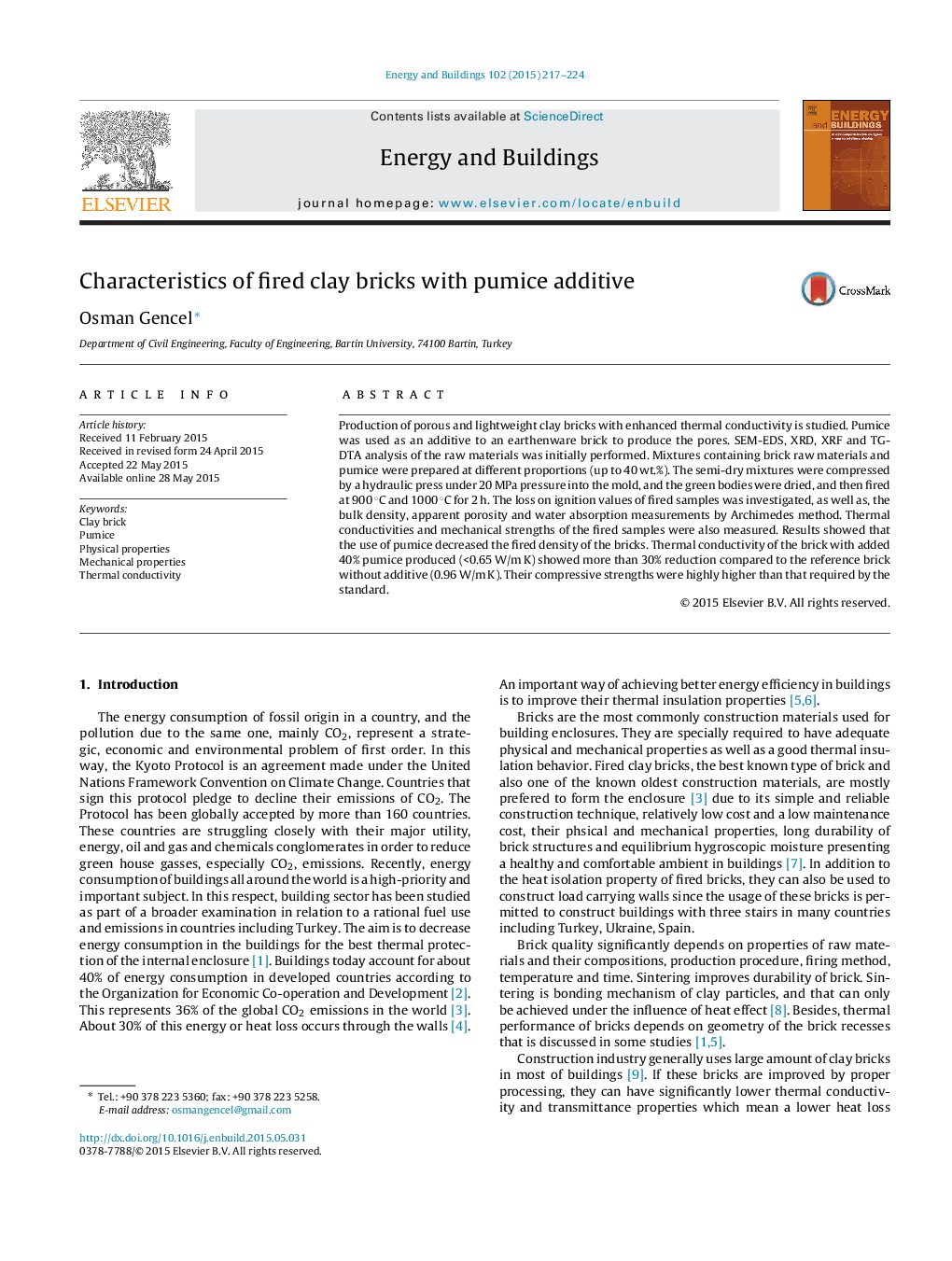| Article ID | Journal | Published Year | Pages | File Type |
|---|---|---|---|---|
| 262536 | Energy and Buildings | 2015 | 8 Pages |
Production of porous and lightweight clay bricks with enhanced thermal conductivity is studied. Pumice was used as an additive to an earthenware brick to produce the pores. SEM-EDS, XRD, XRF and TG-DTA analysis of the raw materials was initially performed. Mixtures containing brick raw materials and pumice were prepared at different proportions (up to 40 wt.%). The semi-dry mixtures were compressed by a hydraulic press under 20 MPa pressure into the mold, and the green bodies were dried, and then fired at 900 °C and 1000 °C for 2 h. The loss on ignition values of fired samples was investigated, as well as, the bulk density, apparent porosity and water absorption measurements by Archimedes method. Thermal conductivities and mechanical strengths of the fired samples were also measured. Results showed that the use of pumice decreased the fired density of the bricks. Thermal conductivity of the brick with added 40% pumice produced (<0.65 W/m K) showed more than 30% reduction compared to the reference brick without additive (0.96 W/m K). Their compressive strengths were highly higher than that required by the standard.
